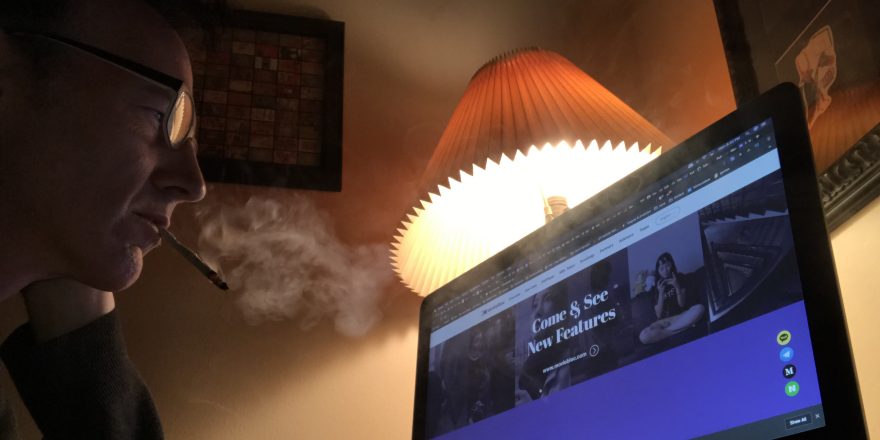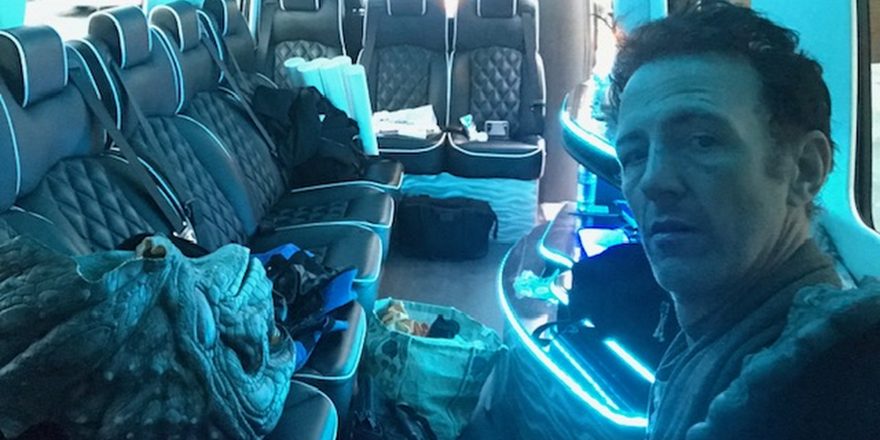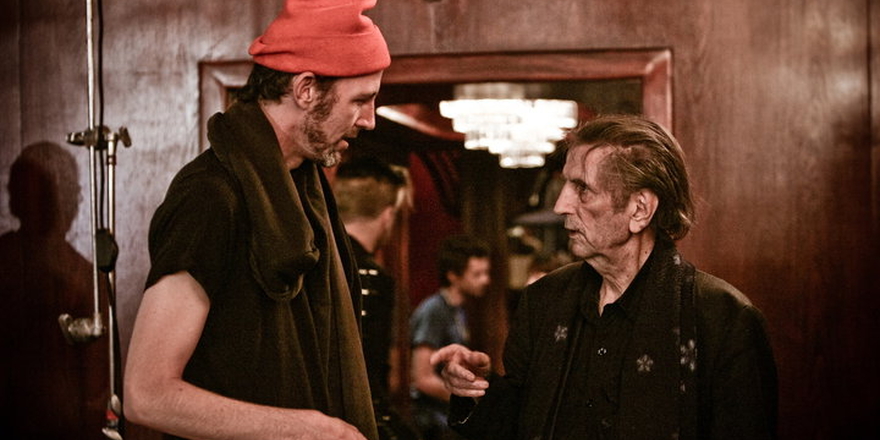In the 1990s, I was pretty cool. I was lazy, but cool. Or I thought I was. I wanted to be. I was acting and playing music, ‘cause that’s what you did when you are a hyper spaze who daydreams a lot, and wants to stay lazy and cool.
I took some acting lessons, got a bunch of parts in student films, and was living the lifestyle of a regular James Dean. I moved to Los Angeles. Quickly, I turned into a desperate actor boy. What can I say, I was young and dumb.
In the year 2000, I quit acting and the film business when I found myself working as a professional techno DJ. It was easy and fulfilled my life dreams of being lazy and cool.
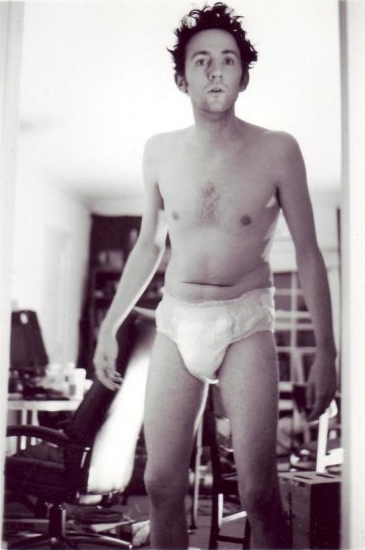
Over the next decade, I continued to DJ, returned to acting, and I started to write, direct and edit films. My computer time was severely ramped up, as I was writing, editing, promoting, producing, submitting to film fests, Facebooking, Photoshopping, making beats, etc. The internet was making things possible for artists that had previously been impossible. At a certain point, I realized I’d turned into a computer geek, all because of my desire to be lazy and cool. What had I done? It was too late now. I was a nerdy workaholic.
And then, as if I could actually spend any more time on my computer, my older brother called me up and completely ruined my life by telling me all about Bitcoin. I had no idea what the hell he was talking about, but after I hung up the phone in a cloud of confusion, I began my deep dive into this world of digital currency known as “crypto.” There was so much information, my head was spinning. The word “blockchain” kept popping up.
As I dived deeper, it happened: I saw the future. The world of blockchain and its technology blew me away. I was hooked. I stopped watching movies, stopped writing, stopped making music, and focused only on educating myself about this powerful decentralized technology designed by technopunks, for the people. I turned myself into a 24-hour blockchain junkie. It was all over.
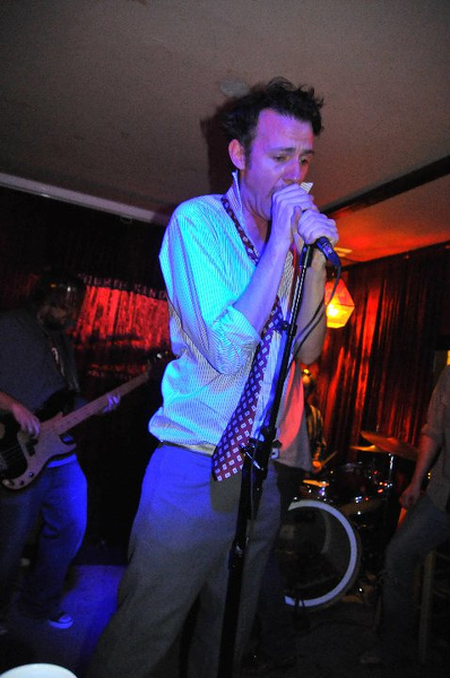
There are so many ways blockchain can be used, and people are inventing or figuring out new uses daily. And when you put blockchain together with film, there is magic. The entire game has a serious chance to flip and flip out hard, but the big question is, when could this happen?
While we don’t know the answer to that question, blockchain is not going away and is only going to grow more central to our daily lives.
The blockchain backstory is very much like a movie itself. In 2008, a mysterious person (or group of people) going by the name of Satoshi Nakamoto released a white paper online that explained Bitcoin, the world’s first digital cryptocurrency. Blockchain is the technology that makes Bitcoin possible.
Satoshi designed blockchain to run by itself. It’s fully automated, and nobody owns it. Blockchain allows digital information to be distributed with no possible way to alter, corrupt or copy what’s being passed between sender and receiver. It is safe, and almost unhackable. Blockchain is all about decentralization and taking full ownership of your world and your content, without a third party dipping into your pockets. If you dream it, and build it, you should own it. And if you decide to sell it, it should be on your terms. Blockchain allows you to do this.
After giving the world cryptocurrency, Satoshi disappeared into thin air. To this day, nobody knows who Satoshi is. Or if they do, they are not willing to admit it publicly. Like I said, it’s like a movie.
Taking the blueprint for a blockchain from Satoshi’s white paper, the world’s tech geniuses went to work, finding other uses for blockchain. And this is where things start to get interesting. But before I get too far ahead of myself, we must go back to 2005.
That year, I started a bedroom record label called LeftHouse Recordings. I found an online distribution company to host our label and get the music out to all the online music shops. The distributors in 2005 were still operating off the classic record label split: 30 percent went to the artist, 70 percent to the distributor. As DIY outlets for music distribution began popping up and the technology for these outlets advanced, the percentages flipped to where the artist took 70 percent. Everything was changing so fast.
At this time, the film industry was scrambling to figure out how to utilize the new technologies the internet was offering. Blockbuster Video was at its peak. But in 2006, Netflix offered up a million dollar-prize to any developer who could come up with a new streaming algorithm. Just a few years later, Netflix, Amazon, Hulu and many other streaming sites were hosting studio and indie films from all over the world.
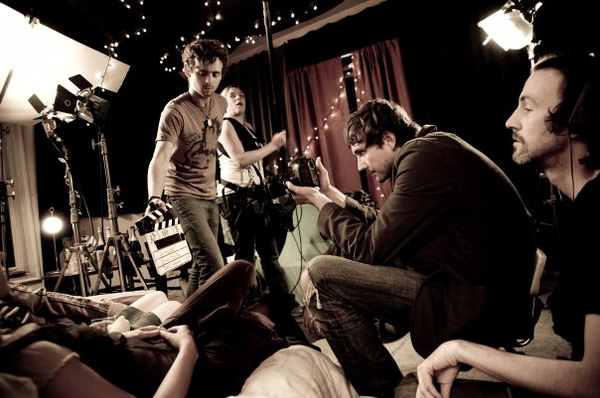
As an indie filmmaker and musician, I had new ways for my films and music to be heard and seen. A couple more years go by, and social media is all the rage, creating ways to spread the word about my art. I created a Facebook fan page, an Instagram account, a Twitter account. I was doing it, running my label and film company. I was feeling the coolest.
Once I took my deep dive into blockchain in 2016, I felt like I had never been cool, and had been lied to my whole life. I was looking into many different blockchains that were being developed, offering insane applications. I found a technology that was designed to keep things fair, honest and transparent, with brand new ways to make real-world currencies that could benefit everyone. There were health systems, basic income systems, earning and staking systems, peer-to-peer, third-partyless transaction systems, storage systems, and social media blockchained websites with the opportunity to earn crypto. Blockchain was being used for almost every conceivable function.
I recently discovered a blockchain company called VideoCoin which plans to take the place of Netflix and Amazon streaming, saying it can do it for half the price, at faster speeds. Blockchain’s technology makes it possible for a business to create new ecosystems that can pay workers, customers, fans, members of the blockchain’s community, and VideoCoin is doing just that. VideoCoin pays people for unused servers. For instance, while you are at work, your computer will not be idle. It will be hooked up to the VideoCoin blockchain, using the computing power, and you get paid for such. When many of these “unused servers” are connected to VideoCoin’s blockchain, the system is faster and stronger. As well, they will pay viewers in crypto to watch VideoCoin content. Sounds pretty cool, right? It gets cooler.
I found blockchain companies that were all about music: Steemit’s DSound, MusicCoin, Choon, music distribution outlets that pay you crypto every time someone listens to your song. I also found blockchain sites that pay you crypto to play video games. As a lazy and cool enthusiast, getting paid to play video games is the dream.
I recently finished a short documentary called Life on a Train and am looking to put my film up for sale/rent on a blockchain-based, crypto-paying site, so I thought it would be good to see what my options were.
A company called MovieBloc, which launched a year and a half ago, looks impressive and has much to offer filmmakers and the film industry as a whole. It promises to “create the biggest and most participant-centric film ecosystem. The Creators will get a transparent revenue share, audience data, and equal screening opportunity; the viewers will access various films & contents and get rewarded for providing curation, subtitle, and marketing material to the ecosystem.”
I reached out to MovieBloc to see if perhaps this could be a good place to launch Life on a Train into the world. Chris Kang, its CEO, broke down some of the perks of blockchain for me: “To the film industry and the filmmaker, the biggest and most certain difference blockchain can bring would be the credibility. You don’t have to worry if the VOD platform that is screening your masterpiece is being transparent when it comes to revenue sharing.”
When I was in touch with Kang at the end of last year, he told me MovieBloc was about to move from beta to its official launch, adding, “If you have some short films or anything you want to showcase during our free beta period, please let us know! We can take a look and upload it.”
I was excited to hear this – I told Chris that I was gonna take him up on the offer, and I did! I submitted a private screener of Life on a Train, and MovieBloc agreed to host the film. It is now the very first non-Korean film to be hosted on MovieBloc, where it is now available!
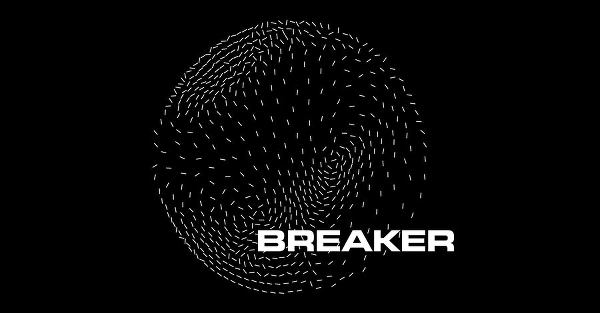
I have two of my features – On Holiday and Window Licker – up for sale/rent on another site called Breaker. Breaker is a blockchain content platform that stems from their parent company, Singular DTV. Singular DTV’s mission is to evolve the entertainment industry with a decentralized ecosystem that empowers creators and delivers fans classic and original content.
SingularDTV’s co-founder and CEO Kim Jackson told me, “Our goal is to build tools for content owners to track revenue and IP, providing valuable real-time data to an obfuscated industry. We founded SingularDTV to empower content owners. As one of the company’s products, Breaker is a content-driven platform with blockchain tools for rights, revenue and management to create a fair and transparent entertainment ecosystem.”
When I signed up and loaded my films on to the Breaker, it was quick and easy. You need to own at least $10 in crypto and have a crypto wallet to set your film up. And when you go and rent, or buy my films, you will pay with crypto, which will instantly go into a wallet I have set up for the films’ earnings.
The big equation here is getting people who know nothing about crypto and these blockchain streaming outlets, to support, buy or rent movies on sites like Breaker and MovieBloc. It will not be tomorrow, but one day I believe everyone will hold and use crypto, which will make all this easier. I think it’s smart to support blockchain companies and the cryptocurrencies they provide. Most of these cryptos provided by these blockchains are designed as a utility token to run their blockchain. Buying into a company’s crypto is like investing in their tech and their product. There are thousands of blockchain companies out there. Some have working products, some are developing, and some are scams. A person needs to do his or her own research before getting involved in all this.
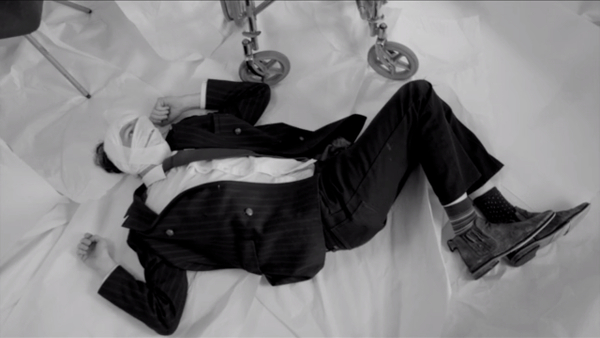
Blockchain tech makes it possible for you to be your own bank, own your own content, get paid for your time, work, energy, and enjoy all the countless other ways blockchain tech can be used. Once these properties are understood by the masses, a completely blockchained future will be possible.
At this point, 27 million Americans are holding bitcoin and other cryptocurrencies. That is nine percent of the population, and indicates that we’re headed in the right direction for a mass adoption of crypto.
Perhaps soon the percentage will tip into mainstream numbers, and I will be deep enough into blockchain that I’ll be fully educated on its possibilities (and pitfalls), my films and music up on the right blockchains – and perhaps I will even become lucky, cool and lazy again. Only time will tell.


